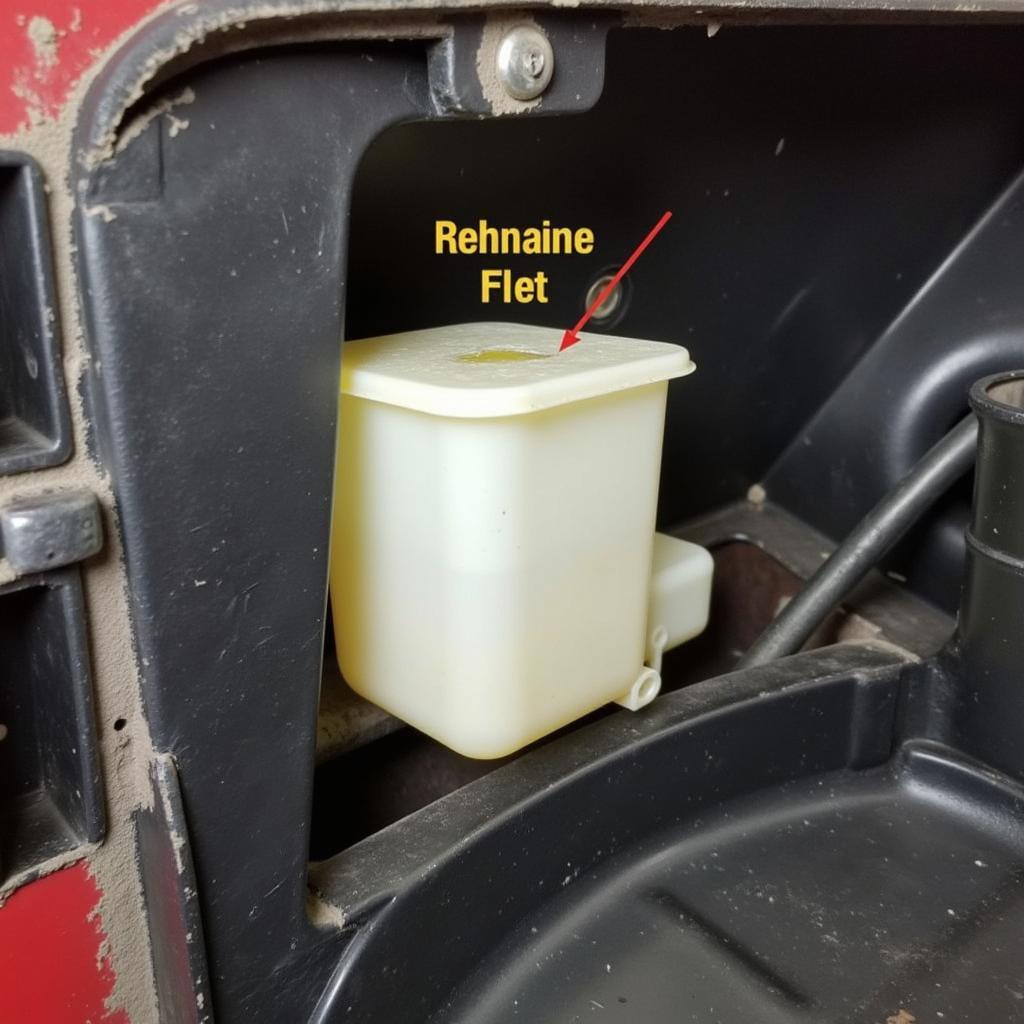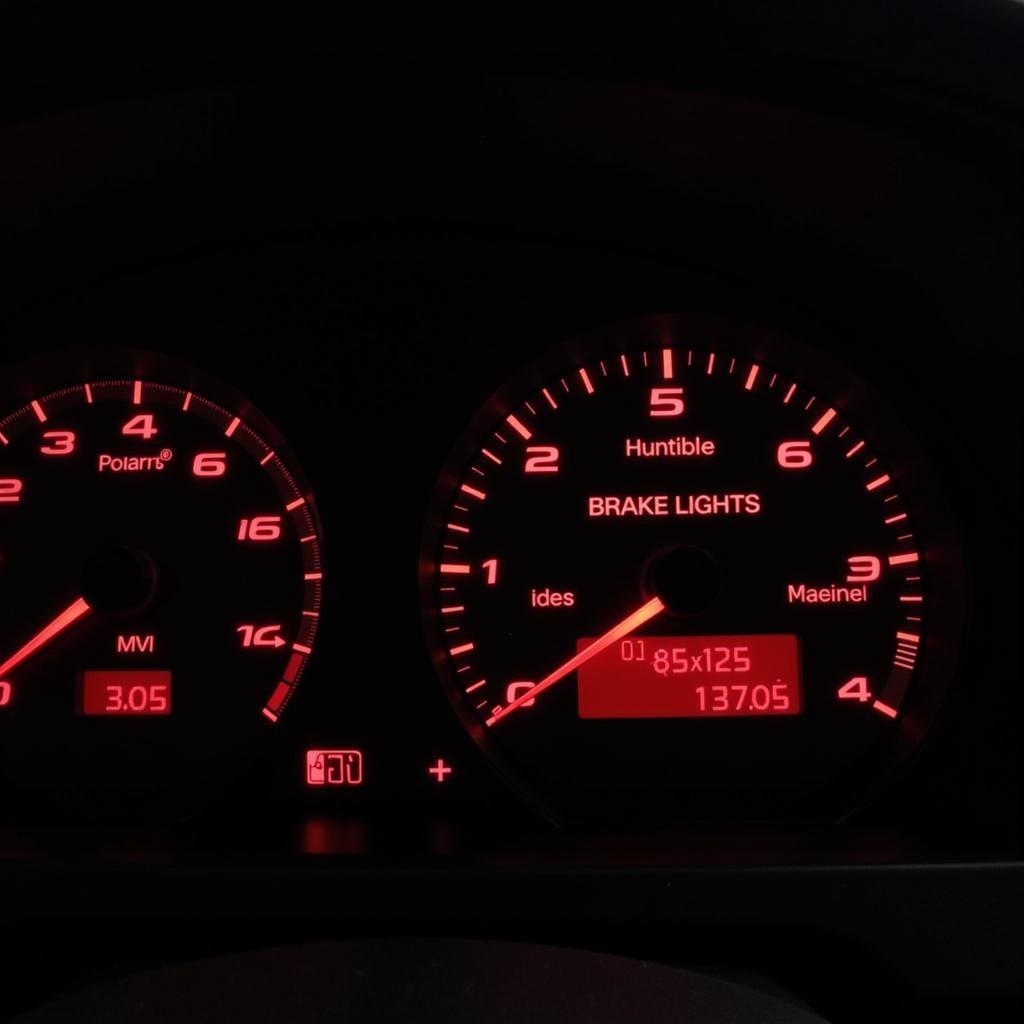The brake warning light on your Early Bronco is a crucial safety feature, illuminating on your dashboard to signal potential issues within your braking system. While a temporary flicker might not be cause for major concern, a persistent or sudden illumination warrants immediate attention. Ignoring this warning light could lead to decreased braking performance and potentially dangerous driving situations. This guide will walk you through common causes behind an illuminated brake warning light on your Early Bronco, provide troubleshooting tips, and offer potential solutions to get you back on the road safely.
Understanding Your Early Bronco’s Brake System
Before delving into the specifics of the warning light, it’s helpful to understand the basic components of your Early Bronco’s braking system:
- Master Cylinder: This is the heart of your braking system. When you press the brake pedal, it pressurizes brake fluid.
- Brake Lines: These metal tubes carry pressurized brake fluid from the master cylinder to the wheels.
- Brake Calipers (Disc Brakes) or Wheel Cylinders (Drum Brakes): These components house the pistons that force the brake pads or shoes against the rotors or drums, creating friction to slow or stop your vehicle.
- Brake Fluid: A hydraulic fluid that transmits the force from the master cylinder to the brakes.
Common Causes of an Illuminated Brake Warning Light
There are several reasons why your Early Bronco’s brake warning light might be on:
1. Low Brake Fluid Level
 Early Bronco Low Brake Fluid
Early Bronco Low Brake Fluid
This is one of the most common and easily resolvable issues. As brake pads wear down, the brake fluid level in the master cylinder naturally drops. A leak in the brake system can also lead to low fluid.
Solution:
- Park your Bronco on a level surface and engage the parking brake.
- Carefully open the hood and locate the master cylinder. It’s typically a translucent plastic reservoir mounted on the firewall.
- Check the fluid level. If it’s below the “MIN” or “LOW” mark, add the correct type of brake fluid recommended in your owner’s manual.
- If you’ve recently topped up the fluid and it’s low again, there’s likely a leak in the system that requires immediate professional attention.
2. Worn Brake Pads
 Worn Brake Pads Comparison
Worn Brake Pads Comparison
Brake pads are designed to wear down over time. When they reach a certain level of wear, a sensor (if equipped) will trigger the warning light.
Solution: Have your brake pads inspected by a mechanic. If they are worn beyond the recommended thickness, they’ll need replacement.
3. Faulty Brake Light Switch
The brake light switch is located behind the brake pedal and is responsible for turning on the brake lights when you press the pedal. If this switch malfunctions, it can also trigger the brake warning light.
Solution: A faulty brake light switch usually needs to be replaced. This is a relatively straightforward job for a mechanic.
4. Issues with the ABS System
Early Broncos equipped with Anti-lock Braking Systems (ABS) might have a dedicated warning light for ABS malfunctions. However, in some cases, a general brake warning light might illuminate for ABS issues.
Solution: Diagnosing ABS problems requires specialized equipment. If you suspect an issue with your ABS system, it’s best to consult a qualified mechanic.
5. Master Cylinder Problems
Internal issues within the master cylinder, such as a leaking seal, can cause a drop in brake pressure and trigger the warning light.
Solution: A failing master cylinder usually requires replacement. This repair is best handled by a professional.
Additional Troubleshooting Tips:
- Check Your Parking Brake: Make sure your parking brake isn’t partially engaged.
- Inspect Brake Lines: Visually inspect the brake lines under your Bronco for any signs of leaks, cracks, or corrosion.
- Consult a Mechanic: If you’re unable to pinpoint the cause of the illuminated brake warning light, or if you’re uncomfortable working with brake systems, consult a qualified mechanic immediately.
Conclusion
Addressing an illuminated brake warning light on your Early Bronco should be your top priority. Ignoring this warning could lead to a significant decrease in braking performance and put you and your passengers at risk. By understanding the common causes and solutions outlined in this guide, you’re better equipped to troubleshoot the problem and seek necessary repairs promptly, ensuring your classic Bronco continues to provide a safe and enjoyable driving experience.


